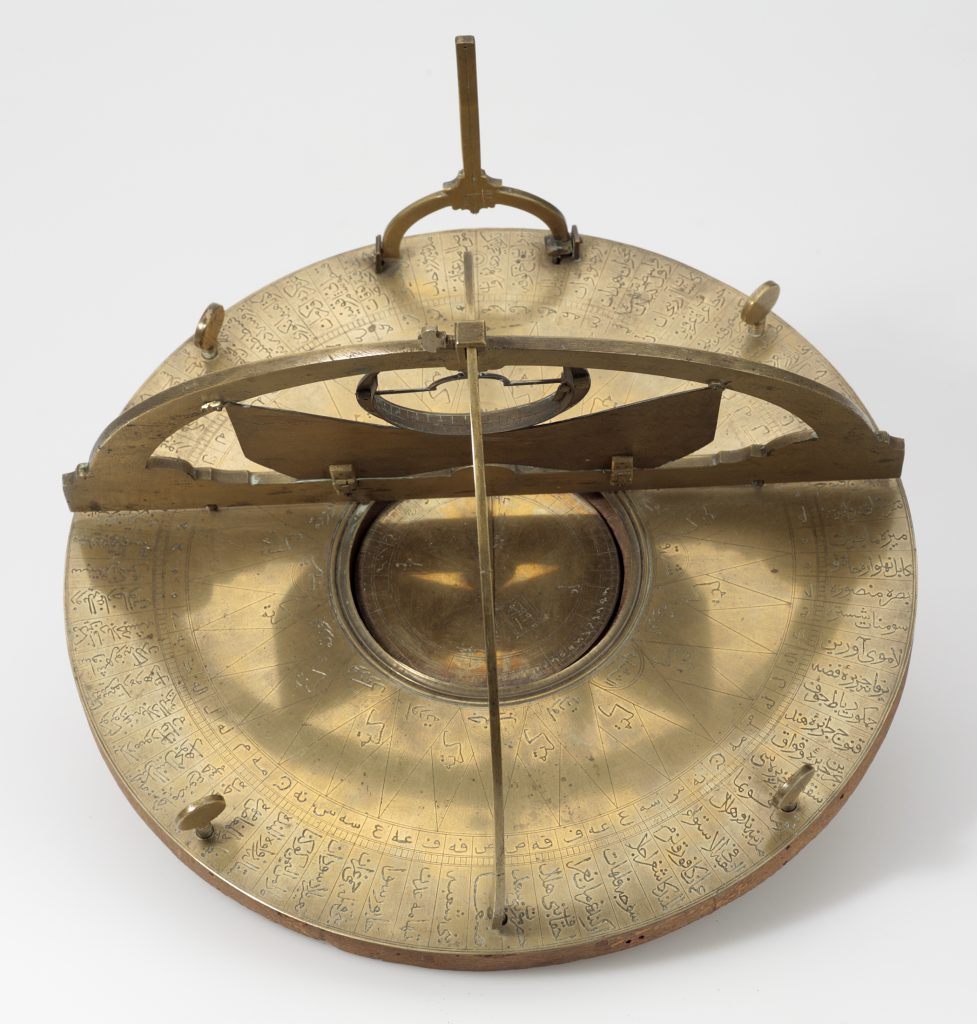



Title: Da’irat al-Mu‘addil
Date: dated 1161 AH (1748–9 AD)
Location: Istanbul, Turkey
Materials: brass, beaten, cast and engraved, attached to a wooden base
Accession Number: SCI 270
Other Notes:
In the mid-15th century an Egyptian astronomer called ‘Abd al-‘Aziz ibn Muhammad al-Wafa’i al-Miqati, who was timekeeper (muwaqqit) at the mosque of al-Mu’ayyad in Cairo, invented an instrument that combined a qiblah compass with a sundial, which he called the da’irat al-mu‘addil (‘equatorial circle’). It was described by him and by later astronomers, including the Turkish admiral Seydi Ali Reis. Perhaps as a result of the work of Seydi Ali, the instrument became popular in Ottoman Turkey.
The base plate of this instrument houses a magnetic compass is marked at the circumference with the names of various cities and so that, when aligned on the meridian, it gives the direction of Mecca. When correctly oriented, the instrument also functions as a sundial.
The instrument is signed, ‘Ali al-muwaqqit Ebülfeth Sultan Mehmed Khan, that is the timekeeper at the mosque of Fatih, founded by Mehmed the Conqueror in Istanbul.
Script:
17.3 x 24.2cm
Bibliography:
F. Maddison & E. Savage-Smith, Science, Tools & Magic, The Nasser D. Khalili Collection of Islamic Art, volume XII, Part One, London 1997, cat.168, pp.278–9.
J.M. Rogers, The Arts of Islam. Masterpieces from the Khalili Collection, London 2010, cat.369, p.312.
Zoom
Close

Create your own collection of artworks that you can print or save as a PDF. Please enter you email to enable feature.
Small Flask | JLY 1075
Has been added to your collection.
TIP:
You can now access and view your collection from the main menu at any time.